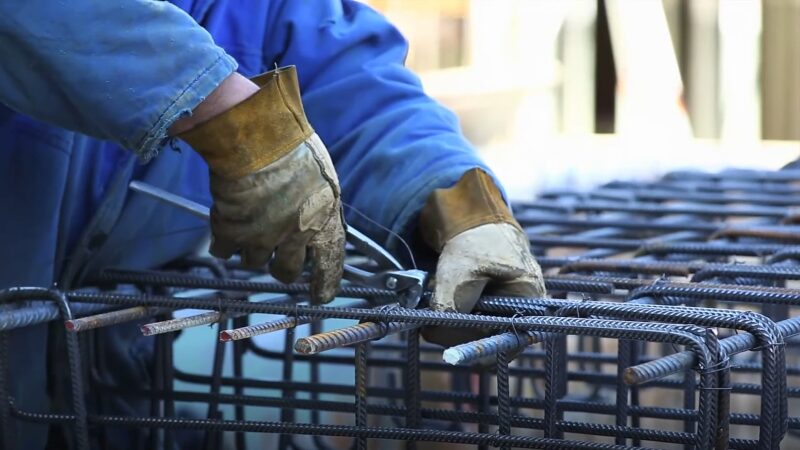Each day, millions of Americans head off to work, many assuming it will be a routine shift without major risks. For some, though, every day comes with a level of danger that few would willingly face. Consider a logger in the misty forests of the Pacific Northwest, where a single misstep around towering machinery could mean the difference between life and death.
Or a roofer braving gusting winds atop a sloped surface many stories high, every second relying on their balance and skill to keep them safe. From high-risk heights to relentless ocean waves and heavy equipment, some jobs bring dangers that are hard to imagine for those sitting in an office or standing behind a counter.
For workers like pilots navigating unpredictable skies or refuse collectors weaving through busy streets, their jobs push the limits of personal safety daily. It is not just the intense skill required to do the job but also the extreme environments in which they work.
Fishers face stormy seas, drivers tackle roads filled with distracted drivers, and underground miners brave confined spaces and powerful machines—all of them entering the unknown with the hope they will return home safely.
Despite stringent safety protocols and advances in technology, the fact remains: that the risk for certain jobs cannot be fully removed. In many ways, these roles are the backbone of our country, ensuring we have the resources, goods, and services that keep our lives running.
Knowing these dangers, workers in these fields often take pride in their resilience, understanding that their work supports something larger than themselves.
The following list highlights the 10 most dangerous jobs in the U.S., ranked by their injury and fatality rates.
- Logging Workers – 100.7 per 100,000 workers
- Roofers – 57.5 per 100,000 workers
- Fishing and Hunting Workers – 50.9 per 100,000 workers
- Helpers in Construction Trades – 38.5 per 100,000 workers
- Aircraft Pilots and Flight Engineers – 35.9 per 100,000 workers
- Driver/Sales Workers and Truck Drivers – 30.4 per 100,000 workers
- Refuse and Recyclable Material Collectors – 22.6 per 100,000 workers
- Structural Iron and Steel Workers – 21.3 per 100,000 workers
- Underground Mining Machine Operators – 20.1 per 100,000 workers
- Miscellaneous Agricultural Workers – 20.0 per 100,000 workers
1. Logging Workers
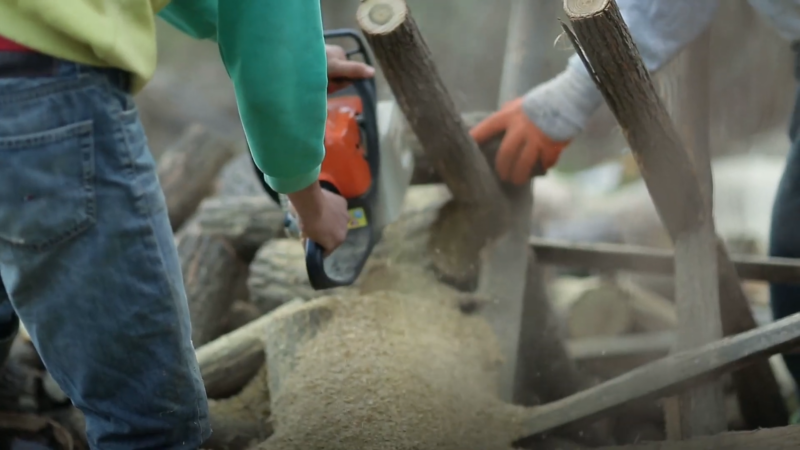
Logging workers face dangers from various sources, both environmental and equipment-based.
- Falling Trees and Limbs: The primary task of felling trees carries the constant risk of being struck by massive trunks or unpredictable branches.
- Heavy Machinery: Logging involves operating saws, loaders, and chainsaws, each posing its own injury risks due to their weight and power.
- Remote Locations: Loggers typically work in isolated areas, making emergency medical care challenging to access quickly.
Fatal Injury Rate
According to the Bureau of Labor Statistics, the fatal injury rate for logging workers stands at 100.7 deaths per 100,000 full-time workers. This staggering number reflects the inherent dangers of the job, with logging workers nearly 30 times more likely to face fatal incidents compared to the average worker in the U.S.
Common Types of Injuries
- Crushing Injuries: These occur when workers are pinned under felled trees or logs.
- Lacerations and Amputations: Chainsaw accidents can lead to deep cuts or even amputations, which are common due to the close handling of sharp equipment.
- Falls: Working on unstable ground or at heights increases the risk of serious falls.
Medical professionals are working on improvements to provide health in a faster and more efficient way. Also, there are first-aid kits and numerous products that can help people before the professionals get to the site.
For example, a medical backpack introduced by YEYETAC is essentially designed for medical professionals, but even those with basic knowledge in providing first aid could find it quite helpful.
2. Roofers
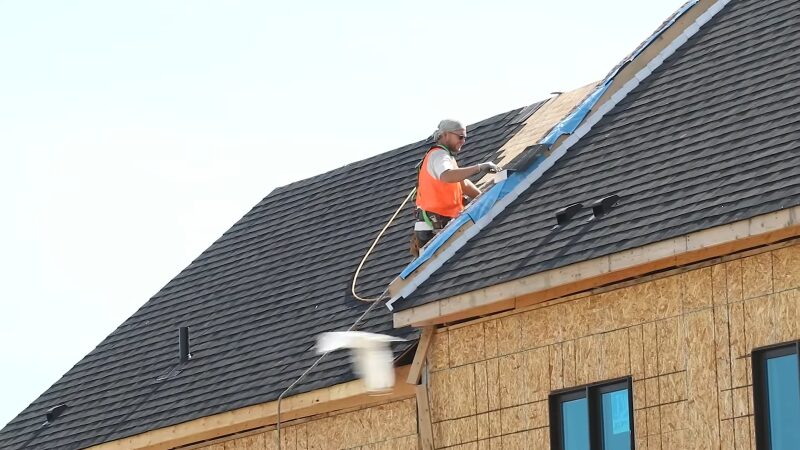
The hazards faced by roofers are numerous, ranging from environmental factors to equipment-related risks.
- Working at Heights: Roofers consistently work on elevated surfaces, exposing them to the risk of fatal falls.
- Slippery or Unstable Surfaces: Rain, snow, or improperly installed materials can make roofs dangerously slippery or weak, increasing the likelihood of falls.
- Heavy Equipment and Materials: Roofing materials such as shingles, tiles, and sealants are heavy, and carrying them across unsteady surfaces poses additional risks.
Injury Rate
Roofing ranks as the second most dangerous occupation in the U.S., with a fatal injury rate of 57.5 deaths per 100,000 workers. Roofers are more than 16 times as likely to experience fatal injuries as the average worker, according to the latest Bureau of Labor Statistics data.
Types of Common Injuries
- Falls: Falls account for the majority of roofing injuries, often leading to severe injuries or fatalities.
- Heat-Related Illnesses: Roofers often work in extreme heat, leading to dehydration, heatstroke, and other related health issues.
- Cuts and Punctures: Sharp tools and nails commonly used in roofing work can cause cuts or puncture wounds.
3. Fishing and Hunting Workers

The inherent dangers of this occupation stem from both environmental factors and the tools of the trade.
- Harsh Weather Conditions: Workers often face storms, high winds, and extreme cold, which increase the risk of accidents and fatalities.
- Drowning Hazards: Operating on or near bodies of water places fishing workers at constant risk of drowning.
- Heavy Equipment: Handling nets, hooks, winches, and other heavy equipment increases the likelihood of serious injuries.
Injury Rate
Fishing and hunting rank as one of the most dangerous jobs, with a fatal injury rate of 50.9 per 100,000 workers.
Types of Common Injuries
- Drowning: Falling overboard, vessel capsizing, or getting caught in fishing nets can lead to fatal drowning incidents.
- Equipment-Related Injuries: Cuts, broken bones, and crush injuries occur frequently due to close contact with heavy equipment and machinery.
- Exposure-Related Illnesses: Prolonged exposure to cold temperatures and harsh weather can lead to hypothermia, frostbite, and other serious health issues.
4. Helpers in Construction Trades
Construction helpers work alongside skilled tradespeople such as carpenters, bricklayers, and electricians, assisting with a wide range of physical tasks on job sites. Their duties often involve lifting heavy materials, operating machinery, and setting up equipment, all in an environment with various hazards, from falling objects to active machinery. The risks in this role are numerous.
- Heavy Lifting and Repetitive Motion: Frequent lifting, bending, and handling of equipment can lead to serious muscle strains and injuries.
- Exposure to Heights and Falling Objects: Construction helpers work in areas where tools and materials may fall from above.
- Proximity to Hazardous Equipment: Working around heavy machinery such as cranes, forklifts, and power tools poses risks of serious injuries.
Injury Rate
Construction helpers have a fatal injury rate of 38.5 per 100,000 workers, underscoring the occupational hazards inherent to construction sites.
Common Types of Injuries
- Strains and Sprains: Due to repetitive lifting and awkward movements, these injuries are common.
- Falls: Helpers are at risk of falls, especially when working on uneven ground or scaffolding.
- Crushing Injuries: Working near heavy machinery and materials poses the risk of getting pinned or crushed.
5. Aircraft Pilots and Flight Engineers
Every company that has pushed the limits of their industry has had deaths. SpaceX has not had nearly as many as their counterpart, your beloved, NASA.
Moreover..
Construction is the industry with the most workplace deaths in the United States. In 2022, there were 1,069 fatal… https://t.co/DoYDQ95YXK— Feral Housewife (@jstlilone85) September 30, 2024
Despite rigorous training and strict regulations, flying remains risky due to various factors.
- Weather and Environmental Hazards: Sudden changes in weather, such as storms or strong winds, pose significant dangers during flight.
- Mechanical Failures: Equipment malfunctions can occur, and in-flight mechanical issues may result in emergencies.
- Human Error: High stress and mental fatigue can lead to errors that impact safety.
Injury Rate
The fatal injury rate for pilots and flight engineers is 35.9 per 100,000 workers.
Types of Common Incidents
- Crashes and Collisions: In-flight collisions or crashes due to weather or equipment issues are among the most severe risks.
- Turbulence-Related Injuries: Unexpected turbulence can lead to falls or injuries within the cabin.
- Fatigue-Related Errors: Pilots working long hours may face an increased risk of errors due to exhaustion.
6. Driver/Sales Workers and Truck Drivers
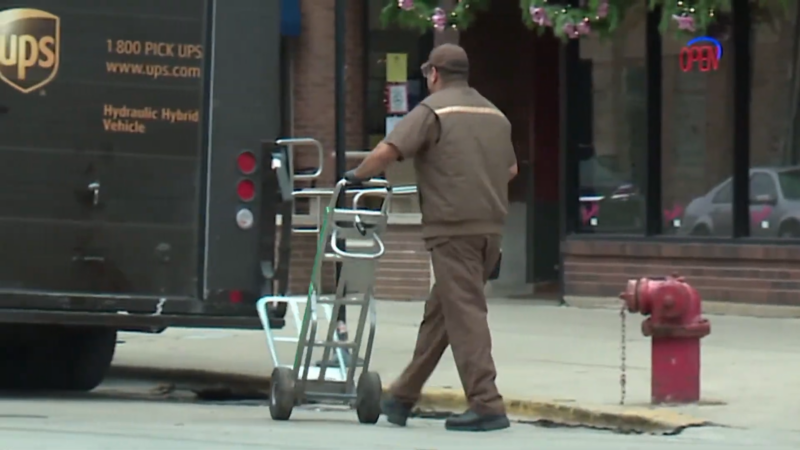
While driving may seem routine, truck drivers face unique risks due to their extensive time on the road.
- Long Hours and Fatigue: Extended driving periods without breaks can lead to exhaustion, increasing the likelihood of accidents.
- Heavy Traffic and Road Hazards: Navigating congested highways or rural roads requires constant focus and quick reactions.
- Weather Conditions: Rain, snow, and fog can create dangerous driving conditions for large vehicles.
Injury Rate
Truck drivers experience a fatal injury rate of 30.4 per 100,000 workers. This high rate reflects the daily dangers faced by those who operate vehicles over long distances, often in adverse conditions.
Common Types of Injuries
- Collisions: Accidents with other vehicles are the leading cause of fatal injuries for truck drivers.
- Musculoskeletal Strain: Constant sitting, heavy lifting, and loading cargo can lead to chronic pain and injuries.
- Weather-Related Accidents: Slippery or icy roads increase the risk of losing vehicle control.
7. Refuse and Recyclable Material Collectors
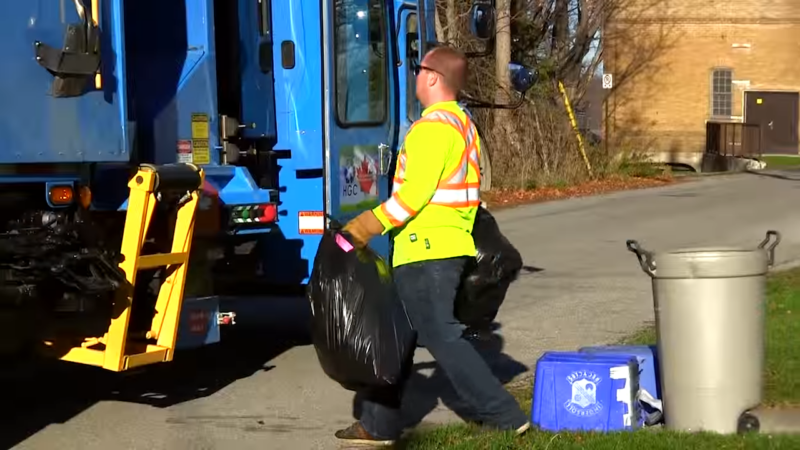
The occupation’s hazards stem from a mix of physical and environmental factors.
- Traffic Hazards: Collectors are constantly in close proximity to traffic, making them vulnerable to being struck by passing vehicles.
- Heavy Lifting: The job requires repeated heavy lifting, which increases the risk of musculoskeletal injuries.
- Exposure to Hazardous Materials: Collectors may come into contact with sharp objects, toxic waste, or biohazardous materials.
Injury Rate
Refuse collectors have a fatal injury rate of 22.6 per 100,000 workers, one of the highest among U.S. occupations.
Types of Common Injuries
- Vehicle-Related Incidents: Getting hit by other vehicles or involved in accidents is a major concern.
- Back and Shoulder Strains: Continuous lifting and handling of heavy waste bins contribute to musculoskeletal strains.
- Cuts and Lacerations: Sharp objects in waste can cause cuts and lacerations, sometimes leading to infections.
8. Structural Iron and Steel Workers
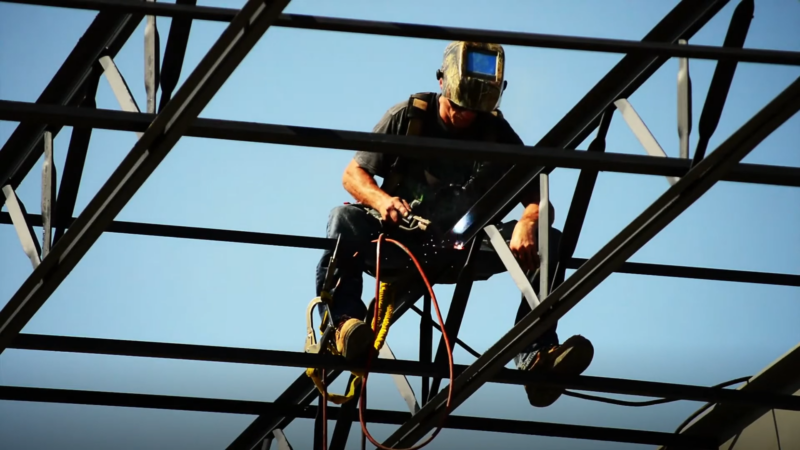
The risks in structural iron and steel work primarily come from working at significant heights.
- Risk of Falls: The primary danger in this job is the risk of falls from high structures, often fatal if safety measures are inadequate.
- Heavy Equipment and Materials: Workers handle heavy beams and equipment, which can cause injuries if not properly managed.
- Exposure to the Elements: Working outdoors means facing weather extremes, which can affect safety and increase the likelihood of accidents.
Injury Rate
With a fatal injury rate of 21.3 per 100,000 workers, structural iron and steel workers are among the highest-risk groups, largely due to the fall hazards associated with working at heights.
Common Types of Injuries
- Fall-Related Injuries: Falls from heights lead to broken bones, head trauma, or fatal injuries.
- Strains and Sprains: Lifting and positioning heavy steel beams cause muscle strains and joint injuries.
- Weather-Related Injuries: Exposure to heat or cold can lead to exhaustion, hypothermia, or other weather-related illnesses.
9. Underground Mining Machine Operators
Underground mining machine operators work in confined spaces beneath the earth, extracting minerals or ores. The risks in this occupation stem from both the equipment and the environment.
- Risk of Collapse: Underground tunnels can collapse, trapping workers.
- Heavy Machinery: Operating large machines in tight spaces increases the risk of crushing injuries.
- Limited Oxygen and Hazardous Air Quality: Poor air quality and limited oxygen pose significant respiratory risks.
Injury Rate
Mining machine operators face a fatal injury rate of 20.1 per 100,000 workers.
Common Types of Injuries
- Crushing Injuries: Working in close proximity to heavy machinery increases the risk of crush-related injuries.
- Respiratory Illnesses: Exposure to dust, chemicals, and limited oxygen can lead to long-term respiratory problems.
- Falls and Trips: Navigating tight, uneven spaces leads to frequent falls and injuries.
10. Miscellaneous Agricultural Workers
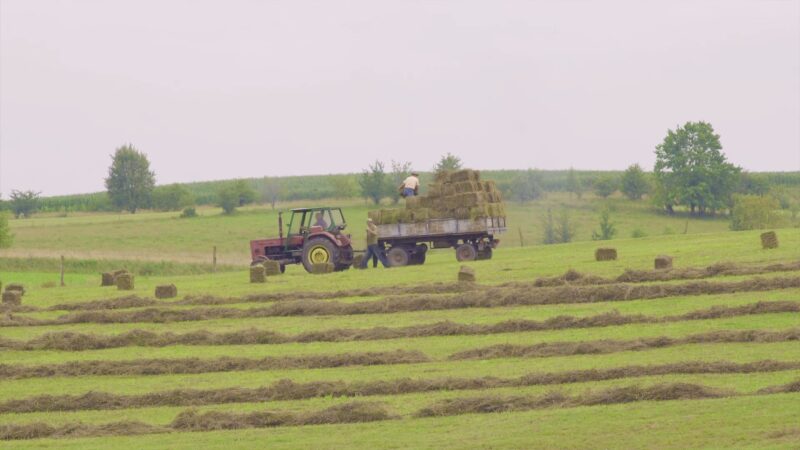
The hazards in agriculture arise from environmental exposure, physical demands, and equipment use.
- Machinery Accidents: Equipment like tractors, harvesters, and plows can cause serious injuries if mishandled.
- Animal-Related Injuries: Handling livestock poses risks of bites, kicks, and other injuries.
- Extreme Weather Exposure: Agricultural work takes place outdoors, leading to risks from sun exposure, heat exhaustion, or cold temperatures.
Injury Rate
Agricultural workers experience a fatal injury rate of 20.0 per 100,000 workers, putting them among the highest-risk groups due to exposure to dangerous machinery and unpredictable animal behavior.
Common Types of Injuries
- Machine-Related Injuries: Working with tractors or other machinery can lead to serious, often fatal, injuries.
- Heat Stress: Prolonged exposure to high temperatures and intense sunlight leads to heat exhaustion or stroke.
- Animal-Inflicted Injuries: Bites, kicks, and trampling by livestock are frequent risks.
FAQs
Last Words
While these jobs are crucial to keeping our infrastructure, resources, and communities running smoothly, they also underline the importance of safety protocols and regulations that protect workers facing daily dangers.
For anyone considering a career in these fields, understanding the risks and taking proactive safety measures can be the difference between a successful, fulfilling career and potential harm.

